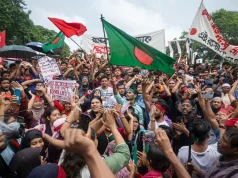INTRODUCTION:
Rape is one of the most ruthless and fierce crimes that has ever existed throughout history. The struggle of women to define rape as a crime persisted for a long time. In the 17th century, rape could simply be described as an accusation easily made, hard to be proved, and harder to defend by the accused party. Hence, there was a strong need for anti-rape laws that could significantly change the definition of rape as a crime.
The word rape is derived from the Latin word “rapio,” which means “to seize .” Rape can be defined as an unlawful sexual activity without the other person’s consent. Although, the broader definition of rape varies from one country to another. The Indian penal code under section 375 broadly defines rape as “A sexual activity with a woman without her consent, against her will, by coercive power, misdirection, or deception, or at a period when she has been intoxicated or duped, or is of mentally unsound, and in any case, if she is a minor that is below the age of 18.”
THE MAJOR AMENDMENTS TO RAPE LAWS IN INDIA:
With the evolution of time, several significant amendments took place in the anti-rape laws. After brutal sexual assault cases like the Mathura rape case, the Delhi rape case, and the Unnao and Kathua rape cases, criminal law amendments of 1983, 2013 & 2018, respectively, were brought.
The infamous Mathura rape case created a nationwide uproar, eventually leading to the Criminal Law Amendment Act of 1983. This was a peculiar case of custodial rape of a young tribal girl named Mathura, who was alleged to be raped by two policemen while she was in their custody. Thus, the judgement of the Mathura rape case resulted in a huge public outcry and widespread protests by women’s organizations throughout India, ultimately leading to Criminal Law Amendment Act, 1983. This act brought about significant changes, and sections 376-B, 376-C, and 376-D were inserted in order to deal with custodial rape. Moreover, Section 114A was inserted in The Indian Evidence Act, 1872, which clearly stated that if a girl in her testimony contends she gave no consent, then the court shall presume the same, and the onus to prove that there was consent lies on the accused.
The gruesome Delhi rape case (2012), prominently known as the Nirbhaya rape case, shook the conscience of the entire country. A young woman was brutally raped by six men in a moving bus in Delhi. She was highly tortured in a very inhuman manner and was treated as a mere object. Hence, the Criminal Law Amendment Act, 2013 came into force. Under this act, significant changes were made in the definition of rape laws. Further, an explanation was added in this section which defined consent as “an unequivocal voluntary agreement of the woman by words, gestures or any form of verbal or non-verbal communication, communicates a willingness to participate in the specific sexual act.” Moreover, the age of consent was raised from 16 to 18 years.
Another significant amendment resulted from two unfortunate rape cases: the Unnao rape case (2017) in UP & the Kathuna rape case (2018) in JK. Both these incidents drew the attention of the media and the public. This, led to the Criminal Law Amendment Act, 2018.
The Criminal Amendment Act, 2018 brought about changes in the Indian Penal Code, the Indian Evidence Act 1872, the Code of Criminal Procedure, 1973, and the Protection of Children from Sexual Offences Act, 2012.
- The Legal Procedure for filing a Rape complaint :
The legal Procedure for filing a complaint against rape in India is initiated by filing a First Information Report(FIR). After filing an FIR, the police have to start the investigation. A medical examination is then carried out in such a way that it does not affect the physical and mental integrity and dignity of the victim.
Moreover, it should be taken into account that rape is a cognizable (arrest without warrant), non-bailable (serious offense where bail is not given) and non-compoundable (cannot be compromised) offence triable by session courts.
- THE PUNISHMENT FOR RAPE:
As said above, rape is a cognizable (arrest without warrant), non-bailable (serious offense where bail is not granted), and non-compoundable (cannot be compromised) offence triable by Sessions Court.
According to Section 376 of the Indian Penal Code, a person who commits rape is punished with rigorous imprisonment for a minimum of ten years but may extend up to imprisonment for life and is liable to pay a fine.
- Responsibility of Government Towards Rape Victims:
Rape is one of the most heinous and barbaric crimes. The condition of victims after rape is complex and multifaceted, which can have significant and long-lasting impacts on their physical, psychological, and social well-being. Rape survivors often experience various physical injuries, including bruises, cuts, broken bones, sexually transmitted diseases (STDs), and unintended pregnancies. Hence, the government’s help significantly mitigates the condition of victim women after rape.
The government’s primary responsibility is to provide speedy justice and fair treatment to rape victims. Every victim’s right is to access speedy justice and be treated with compassion and dignity. Moreover, the victims should be given fair compensation for bodily injuries or impairment of their physical or mental health. Furthermore, rehabilitation plays a significant role in bringing the victim out of mental trauma. Also, the government needs to provide medical and psychological assistance for rape victims.
CONCLUSION:
Rape is one of the most common crimes in our country. Every 10 hours, a girl aged 1-10 is raped in India. According to National Crime Record’s Bureau (NCRB), India annually records 30,000 – 35,000 rape cases. Amendments were brought in place in criminal law, but However, gruesome rapes are still committed against women without hesitation or fear. Many rape cases are unreported for many reasons, as victims think they will be identified, affecting their dignity. Moreover, people are unaware of their rights and ill-informed about the amendments made in the rape laws, which make it difficult for rape victims to get justice.
The government has to make necessary legislative changes to suppress rapes in India. Furthermore, rape victims should get complete assistance from the government. It can also be observed that there is no significant change in the number of rapes committed after the amendments were brought in place. Thus, there is still the need for necessary laws to prevent rapes to a great extent.
We live in a society where women are unsafe and seen as mere sexual objects. Hence, it is required to take the necessary steps so that people think twice before committing such horrifying crimes, and our country can be once again known as a safer country.
The Author is a student of Islamic Studies and Commerce at Al Jamia Islamiya college.






